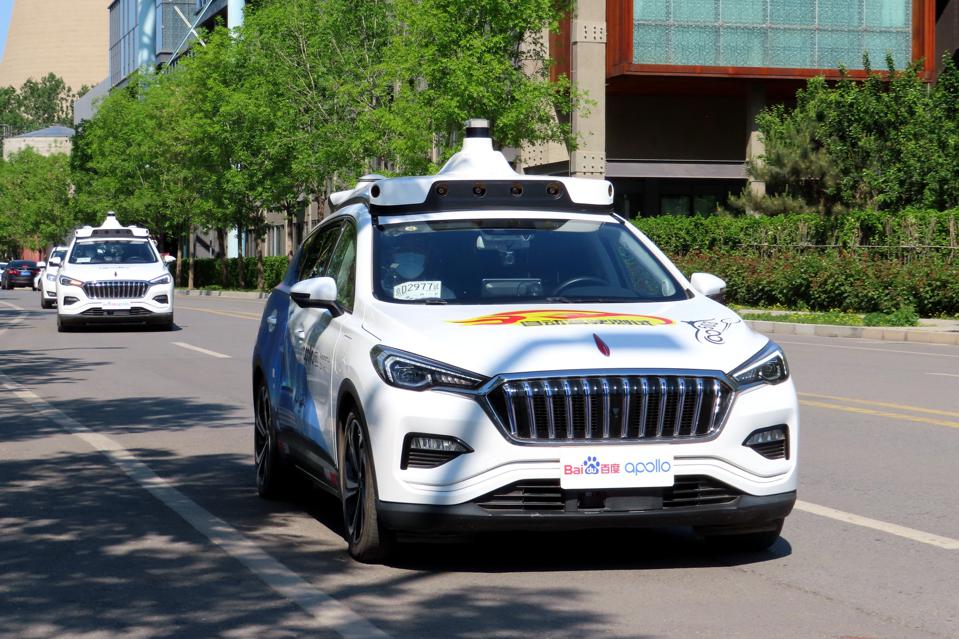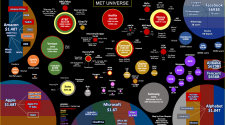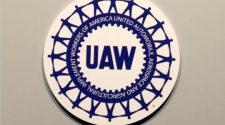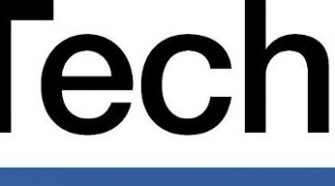Photo credit: Getty
getty
The emergence of new technologies has long been recognized as a pillar of economic growth. Yet new technologies also carry significant uncertainty regarding their economic potential.
Take autonomous vehicles as an example. There has been increasing interest in self-driving cars for nearly 20 years. That interest has been accompanied by high expectations for commercialization by a diverse slate of major businesses including Google, Uber, General Motors, and Tesla. However, commercialization timeline estimates have varied enormously, between less than three years to several decades.

Driverless cars are an example of the difficulty in foreseeing how a new technology might evolve and … [+]
VCG via Getty Images
Driverless cars illustrate the difficulty managers have in foreseeing how a new technology might evolve and prosper. But by simply claiming that the emergence of technology is accompanied by high uncertainty, we may limit the role that managers can play in acting on a technological opportunity.
To have greater power in realizing these opportunities, managers may use a structured approach in unbundling the sources of uncertainty. This includes a shift away from simply considering technological uncertainty (i.e. will the technology work?) to an explicit consideration of uncertainty regarding:
- The market applications the technology can serve
- The users adopting the technology
- The ecosystem of activities that support the technology’s commercialization,
- the business model with which the emerging technology is being commercialized
As demonstrated by our research, if done correctly, this unbundling of uncertainty can help identify:
- When new technologies will successfully emerge and evolve
- How firms might be able to innovate and take advantage of the opportunities presented by these technologies
- How such interactions may shape the resolution of uncertainty
- The resources and coordination requirements necessary for ensuring technological progress
Sources of Uncertainty
During the emergence of a technology, there is substantial uncertainty surrounding how it will perform and accurately assessing the effort and time required to bring it to market. Also, such advances do not take place in a vacuum. Multiple alternative technologies and prevailing technologies may evolve at once.
Another source of uncertainty involves a technology’s possible applications. In many cases, firms simply lack knowledge of where the new technology can be successfully deployed. Consequently, the “best” application may only be discovered over time. Within each application, there is also user uncertainty, as firms lack knowledge regarding users’ preferences and adoption patterns.
With respect to the ecosystem, firms must consider the range of actors that contribute to an innovation’s value creation. Uncertainty here comes from questions as to how those players in a given ecosystem build this value or what role regulators will play (by mandating safety-testing standards for autonomous vehicles, for example).
Finally, firms need to choose a business model that best enables an emerging technology’s commercialization. But it is often unclear what business model is the preferred one for an emerging technology.
When pondering these sources of uncertainty and related questions, it’s important to remember that the uncertainty associated with each source may not exist in isolation. Indeed, these sources often interact. For example, there may be sequential interactions as only when uncertainty around a viable application is resolved can the uncertainty around users be addressed (e.g. safety concerns and adoption costs).
It follows that a structured unbundling of uncertainty requires an examination of all sources of that uncertainty and how they interact.
How can this unbundling help managers? By supporting the way managers 1) sense and 2) seize opportunities.
Sensing involves the “filtering of technological, market, and competitive information from both inside and outside the enterprise, making sense of it, and figuring out implications for action”.
Rigorously unbundling the sources of uncertainty and clarifying their interactions facilitates these processes by offering a structured approach toward identifying where uncertainty is high and which source may be the primary “bottleneck.” It also considers a holistic set of factors behind an emerging technology’s commercialization that can be easily communicated by managers.
Once sensed, firms need to seize technological opportunities and make strategic commitments, which is also supported by a structured approach. For example, in the case of sequential interaction, the resource-allocation process follows a coordinated approach in which a firm expends resources on first resolving uncertainty in one source and, depending on the resolution, then repeating the process on the next important source.
Overall, the proposed approach moves beyond the aggregate characterization of uncertainty surrounding an emerging technology as simply high to one of different sources of uncertainty and the potential interactions between them.
Innovation is too important to be hindered by uncertainty. A deliberate unbundling of what is unknown surrounding a new technology can untap that innovation’s immense potential.
By Thomas Klueter, Associate Professor of Entrepreneurship and Analysis of Business Problems at IESE Business School, and Rahul Kapoor, Professor of Management, Wharton School of the University of Pennsylvania.


















The internet isn’t breaking | Opinion